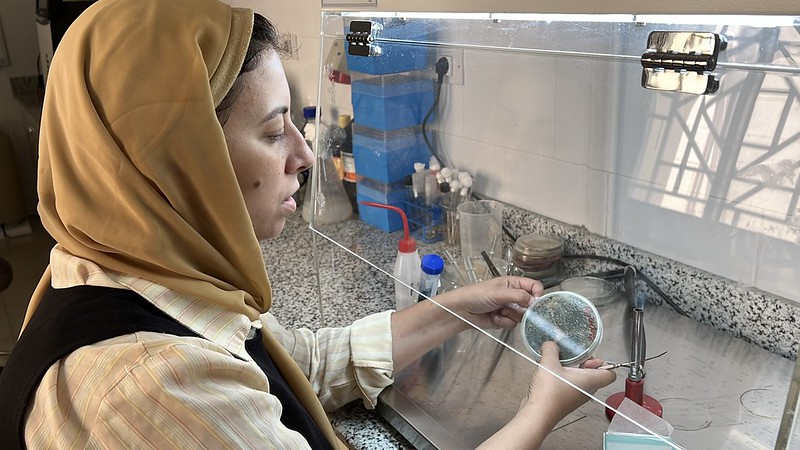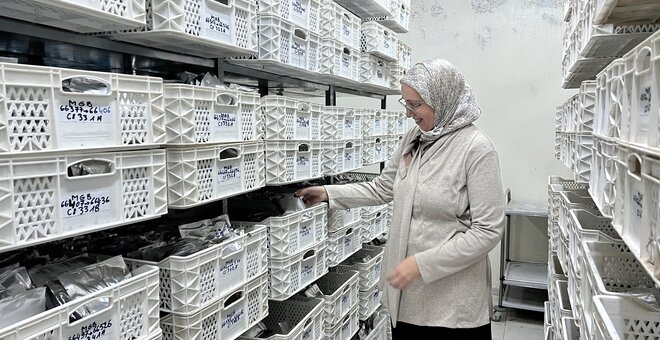Egypt: National Gene Bank
Location
Agricultural Research Center, Giza, Egypt
Parent Organization
Agricultural Research Center, Ministry of Agriculture and Land Reclamation
Mission
- Collecting, evaluating, documenting and conserving plant and animal resources to protect these biological resources from erosion and extinction
- Preserving germplasm in long-term storage
- Providing germplasm for breeding programs, researchers students and farmers, among others
- Exchanging information of the genetic resources with national, regional and international genebanks
Date Established
2004
Number of Samples Conserved
20,500 (as at June 2023)
Main Crops Conserved
- Cereals — bread wheat, barley, maize, sorghum
- Grain legumes — faba bean, lupine, chickpea
- Vegetables — okra, Jew’s mallow, pepper
- Forages — alfalfa, triticale, millet
- Fruits and berries — fig, grape, pomegranate, pear, stone fruits, banana, citrus
- Technical plants — sesame, soybean, flax, safflower, rapeseed, olive
Background
The National Gene Bank (NGB) of Egypt was established in 2004 under the Agricultural Research Center (ARC), Giza. The NGB has the mandate of exploring, collecting, and conserving agricultural genetic resources to protect them from erosion and extinction and make them available for sustainable utilization to public and private institutions and farmers. The NGB comprises five technical departments: Field Crops, Horticultural Crops, Herbarium, Animal Genetic Resources and Research Laboratories. The Research Laboratories include an in vitro and crypreservation laboratory, a cytogenetics laboratory, a molecular genetics laboratory, an animal cell-culture laboratory and a chemical analysis laboratory.
- The NGB has good links with ARC plant breeding programs, with a focus on alfalfa, barley, chickpeas, faba bean, flax, lentils, lupine, sunflower and wheat. Joint evaluation is done annually for drought, heat and salinity tolerance on accessions selected by the genebank.
- The NGB has repatriated Egyptian germplasm from international collections, including at the International Center for Agricultural Research in the Dry Areas (ICARDA) and the United States Department of Agriculture.
The Collection
The seed samples stored at the genebank are managed according to international standards. Seed is stored at 5° C for short-storage, −5° C for medium-term storage and −20° C for long-term storage. A field genebank was established in December 2016. Tree crops conserved in the field genebank include Citrus species, pomegranate, pear, Prunus species, olive and common fig. There are also 100 accessions of grape. The NGB has in vitro facilities that are used to conserve accessions of common fig, grape and banana. Nearly half of the collection comprises landraces collected from Egypt, particularly barley, wheat, faba bean and sorghum. The remainder of the collection is largely breeding materials, including improved varieties. Less than 1% of the collection is crop wild relatives. Wheat landraces are the most requested. All distribution for the past five years has been to university departments and research institutes within Egypt.
Stories about Egypt
Support for National Genebanks Underway
Seeds maintained in genebanks worldwide are the foundation of our future food and nutrition security.
16 Jun 2022






